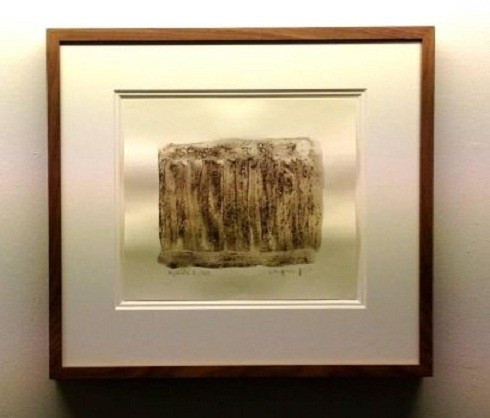Carl Michael von Hausswolff 's 'Stolen Holocaust Ashes' Painting Probed

Police in Poland have launched an investigation into claims a Swedish artist used ashes from a Nazi concentration camp for one of his paintings.
Carl Michael von Hausswolff claimed his work, exhibited at the Martin Bryder Gallery in the Swedish city of Lund, contained ashes he took from the Majdanek concentration camp in Poland - now a museum - during a visit in 1989.
The piece, entitled Memory Works, was removed in December following protests against the exhibition.
Hausswolff could face charges of desecration of the dead or stealing human remains or graves, crimes punishable up to eight years in Poland. Prosecutors have said they have so far not found any evidence a crime has been committed.
The artist had previously been reported to police for breaking a Swedish law that protects the peace of the dead. Swedish police dropped the investigation due to lack of evidence as the alleged offence took place abroad.
Hausswolff mixed the ashes with water to create a charcoal effect on acrylic paper, he said.
In an article to go with the painting, he said he had only decided to use the ashes recently now as the material was "too heavily loaded with the atrocities that had taken place at the site".
Salomon Schulman, a leading voice in Sweden's Jewish community, described the work as "repulsive in the extreme".
Writing in the Sydsvenskan newspaper, Schuklman said: "Who knows, some of the ashes might come from some of my relatives."
The Majdanek museum said: "We are deeply shocked and outraged by the information that the painting allegedly was made with the ashes of Majdanek victims.
"This action is an artistic provocation deserving only to be condemned."
An estimated 80,000 people were murdered by the Nazis in Majdanek, three-quarters of them Polish Jews, from 1941 to 1944.
© Copyright IBTimes 2025. All rights reserved.




















